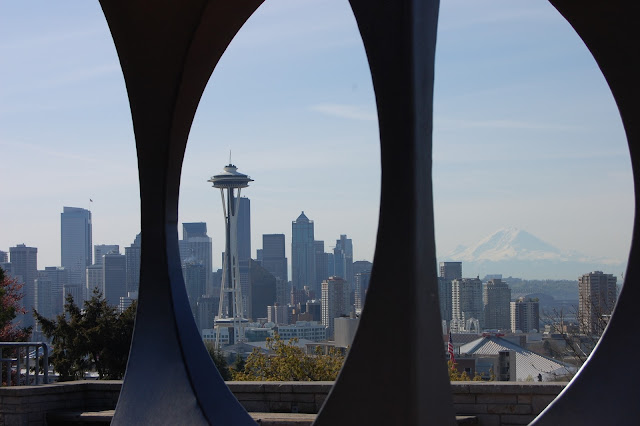The sail of the USS Parche (pronounced PAR-chee) stands outside of the Puget Sound Navy Museum located next door to the Puget Sound Naval Shipyard and the Washington State Ferry dock in Bremerton, Washington. The USS Parche (SSN-683), was one of 37 of the Sturgeon-class fast-attack submarines built and the last to be decommissioned. It was commissioned in 1974 and retired in 2004, spending the last 10 years of service in Bangor, WA, not far from where its sail stands now. The 292 foot Sturgeon-class submarines were mostly phased out in the 1990s, replaced by the Los Angeles and Seawolf classes of submarines.
The USS Parche, is the most decorated ship in US Navy history. The denotations on the side of the 31 foot long, 18 foot high sail include awards for Battle Efficiency, Navigation Excellence, etc. Of special note are the 9 Presidential Unit Citations, the highest award a ship can receive.
Just up the street from the USS Parche sail the bow of the USS South Carolina, a California-Class nuclear powered guided missile frigate, stands out of the sidewalk. The nearly 600 foot ship was commissioned in 1972 and deactivated in 1998. It took nearly 2 1/2 years to recycle the 9,500 ton ship.



